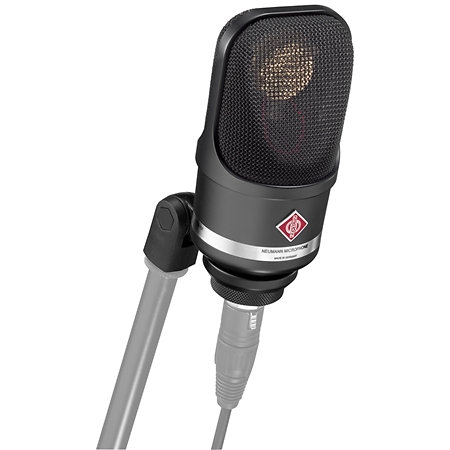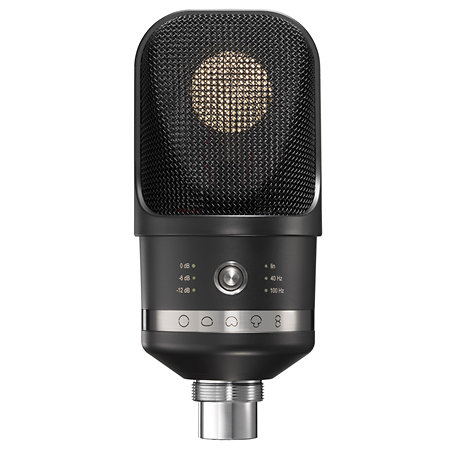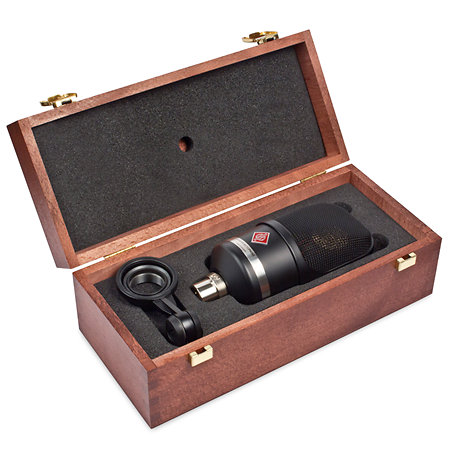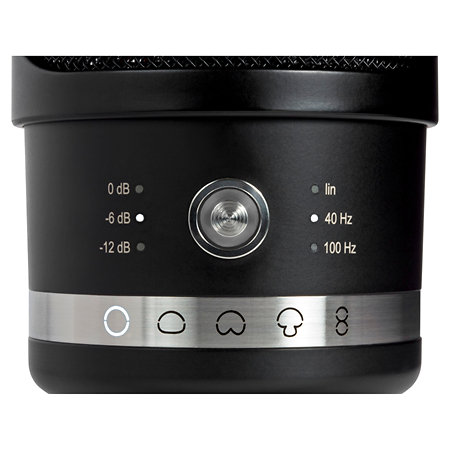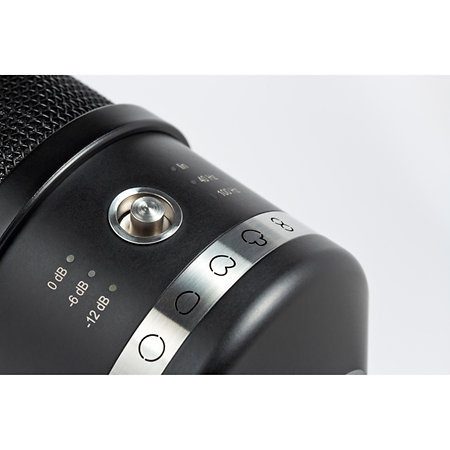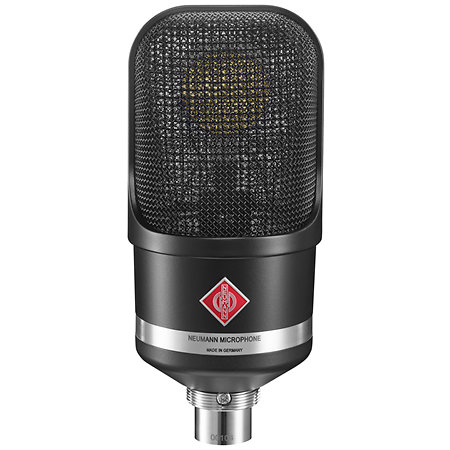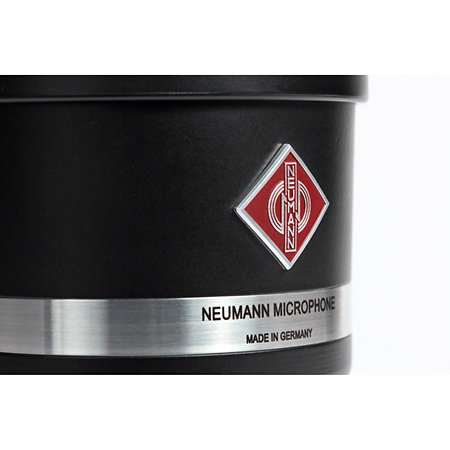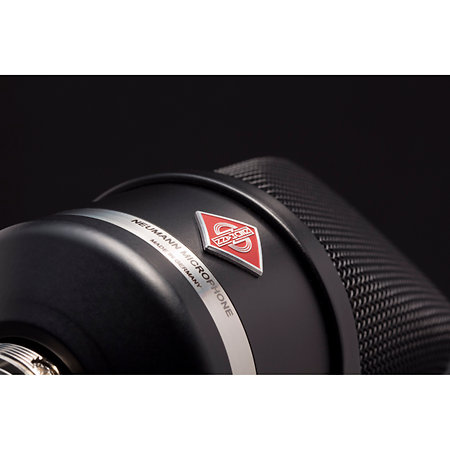Neumann - TLM 107 BK
1 049,17 €
with eco participation: 0,07 €
Out of stock
Contact us for delivery times
Warranty 3 years
Static Microphone
Studio Microphone Neumann TLM 107 Large Capsule, 5 directional patterns: omni, wide cardioid, cardioid, hypercardioid, bi-directional, black finish
ARTICLE N° 40945
Specifications
-
Microphone large diaphragm with 5 directional characteristics (omnidirectional, wide cardioid, cardioid, hypercardioid, bi-directional)
-
Navigation button with illuminated LED display for polar pattern, pre-attenuation and low-cut filter
-
Sound characteristics: clear and natural voice reproduction, exceptional transient response
-
Its balanced on 5 directivity settings
-
Suggested Applications: Singing and speaking with optimized management of sibilance
-
Main microphone in orchestral recordings or extra microphone particularly suitable for strings, woodwind and brass
-
Sound pressure levels recording (SPL) extreme (drums and percussion, guitar amp, etc.)
-
Broadcast (radio fiction, post-synchronization), soundtrack production for movies and games, professional recording studios, home studio "
Presentation
Versatility multifaceted, his uncompromising and innovative operation: with five directional and innovative concept of operation, large diaphragm microphone provides sound without coloration
Information
Capsule type
Capacitor
Application
Singing, Speaking voice, Strings instruments, Guitar / bass amplifier, Drum / percussions
Directivity
Cardioid, Omnidirectional, Hypercardioid, Supercardioid, Bidirectional (Figure-8)
Switchable pad
Yes
Switchable Bass-Cut filter
Yes
Acoustic pressure (dB)
152
Shockmount included
No
Popfilter
No
Microphone clip
Yes
Complete set
Yes
Power supply
Via +48 V phantom power supply
Connectors
XLR male 3 pins
Color
Black
Packaging
Single unit
To go further...
Far from evoking nostalgia vintage or retro, the TLM 107 is an impressive and modern studio microphone. Its reproduction precision wide performance spectrum, very close to the original, makes the TLM 107 universally usable, bringing a hitherto unknown freedom of establishment in mixing and post-production. Engineering Neumann capsule The new design, inspired by high-end microphones from Neumann, D-01, impresses with its remarkable fidelity pulse. The coherence of the five polar patterns, omnidirectional, cardioid and figure 8, more intermediate diagrams that are wide cardioid and hypercardioid is also unusual for a large diaphragm capsule. The MLT 107 does not provide an optimal setting with the cardioid; it also ensures maximum accuracy over the frequency range for all other directional characteristics. The sound is always balanced with an almost linear reproduction up to 8 kHz, and a slight bump in the higher frequencies giving presence and clarity to the voice. In this context, special attention was paid to the natural reproduction of speech sounds, especially the sibilant "s". The grille is acoustically optimized for low sensitivity to popping. In addition, the transducer is connected by the edge, with both the mass diaphragms. Specifically, it ensures a considerable reduction in sensitivity to dust and moisture. The uncompromising sound design transformerless circuit allows a high level of linearity and wide dynamic range. The inherent noise of only 10 dB-A is almost inaudible while in parallel, the TLM 107 accepts very high sound levels. The maximum sound pressure level of 141 dB SPL can reach 153 dB SPL thanks to the pre-attenuation (Pad). This allows the TLM 107 to transmit sound without distortion of the most powerful tools. The low-cut filter settings (linear, 40 Hz and 100 Hz) are precisely matched to specific recording situations. Without undesirable phenomena, the 40 Hz filter in the noise section below the range of the fundamental (41 Hz is the frequency of the E string to empty a bass), while the 100 Hz filter is optimized for speech and singing (100 Hz corresponds to the lowest notes of a baritone). Innovative operating concept for the first time, every microphone configuration functions are controlled by an intuitive navigation button. The flashlight of directivity in the chrome ring is a visual indicator, while the settings of the pre-attenuation and low-cut filter are indicated by LED on the left and right of the button. To avoid distracting the singers, the button and display are located at the rear of the microphone. After 15 seconds, the displays will automatically turn off.
Videos
You may also like
Neumann - TLM 107 BK
Neumann - TLM 107 BK
1 049,17 €
with eco participation: 0,07 €
Out of stock
Contact us for delivery times
Warranty 3 years
Spotlight on
A legendary brand for decades, present in all the major recording studios, Neumann is a guarantee of high quality and professionalism. The Beatles, Natalie Cole, Celine Dion, Bryan Adams and Beyoncé... all use this exceptional brand with the famous U87, and the TLM49 at the top of the list. In home studio, the TLM103 and TLM102 condenser microphones are the most popular. For studio sound on stage opt for the KMS105. In recent years, Neumann has also offered the high-end KH80, KH120 and KH310 monitors.


